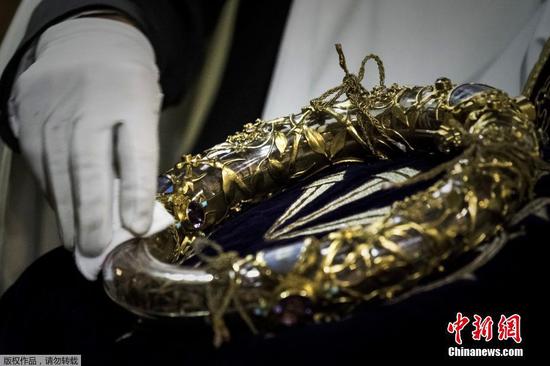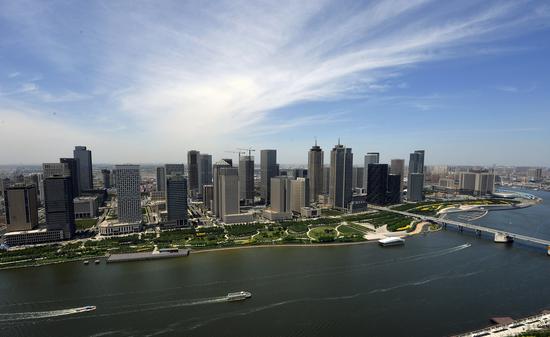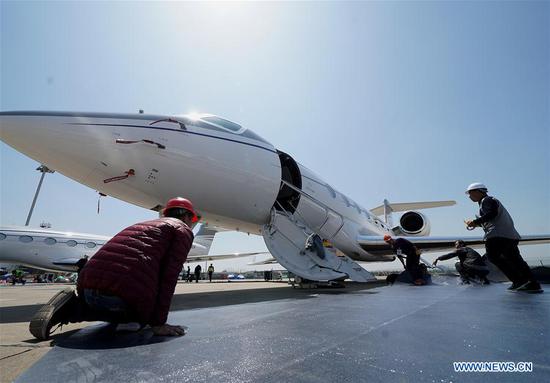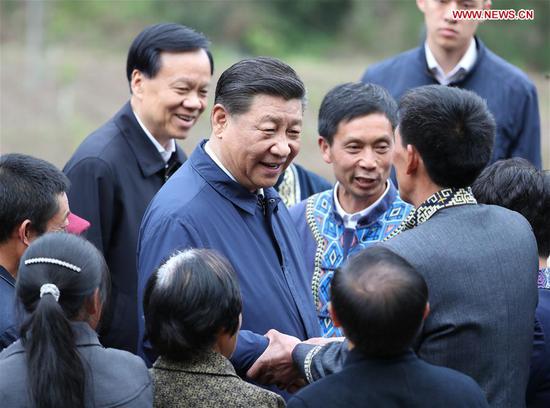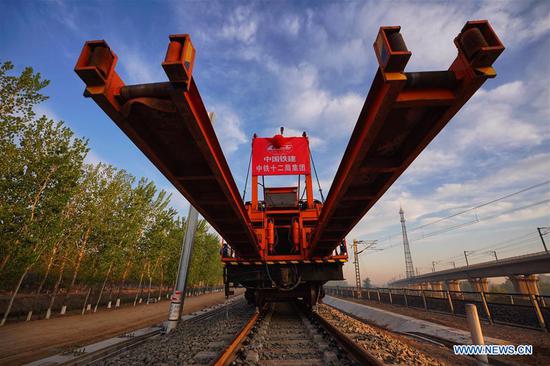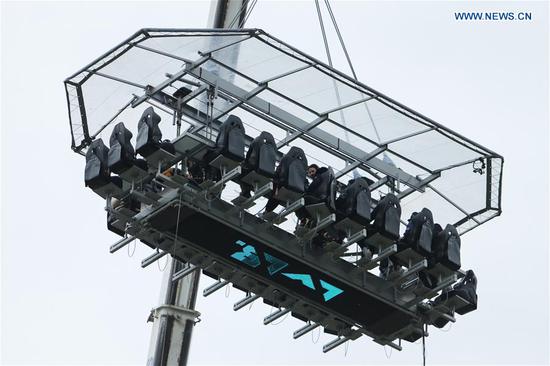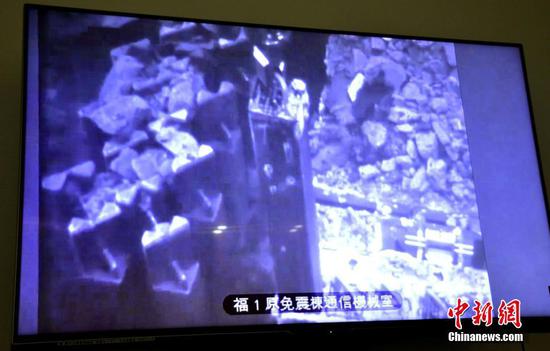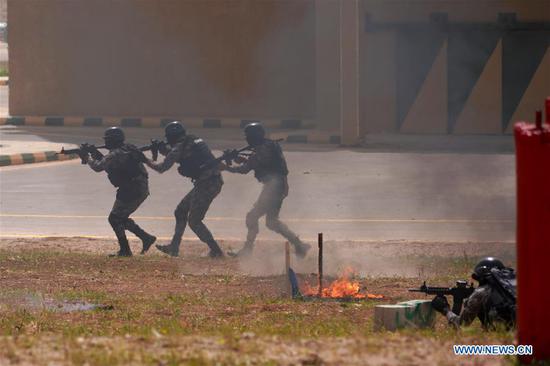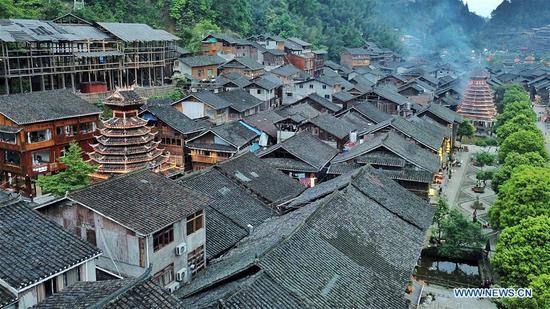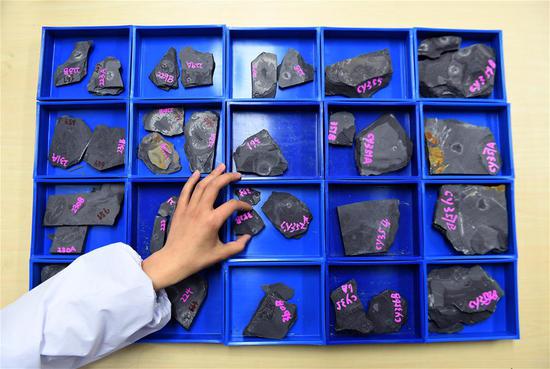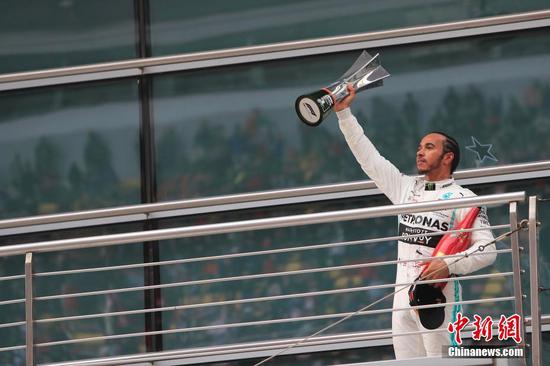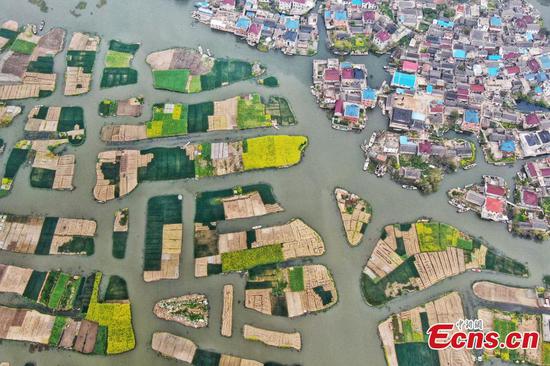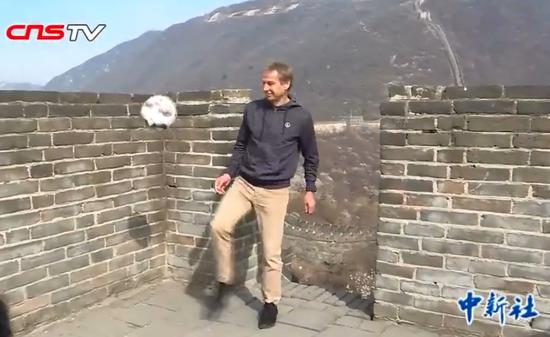
The bridge serves as a major road, rail and marine structure. (XINHUA)
The tanks lined up, were kept 50 meters apart and stretched for 10 km, making it a memorable scene for a generation.
In October 2016, the bridge was closed for repairs after being open for almost 50 years. The 100,000 vehicles it carried each day far exceeded its designed capacity of 8,000, causing many cracks to appear in the structure. It has been repaired 12 times since 2002.
Other problems it faced included falling mortar and metal fatigue. The government decided to spend more than 1.1 billion yuan ($164 million) on the repairs.
The structure's original concrete deck was replaced by a steel one, which is lighter and has greater durability. The replacement work was carried out above the 27,000-volt railway line. Any falling material, even a screw, would have caused a power failure and disrupted services on the busy Beijing-Shanghai Railway. Workers had to erect scaffolding and protective nets when no trains were passing.
The diameter of the lamp bases on the bridge were reduced by 5 centimeters, making the sidewalk wider and more convenient for pedestrians.
Broken and missing cast iron sculptures have also been repaired and replaced. Some 202 of them, including images of sunflowers, landscapes, workers and soldiers, have been placed on the two sets of railings on the bridge to maintain its original appearance.
Guo Jian, deputy director of the Nanjing Center of Public Project Construction, said the bridge could be used safely for another 100 years if properly maintained.
"The comprehensive examination before the bridge was closed showed that it was in its prime," he said. "The bridge has been reliable for years, even after several ships collided with the piers. The flow of traffic and the speed of vehicles have far exceeded the original design but have not affected its solidity."
Yang, from the Nanjing Institute for Urban and Transportation Planning and Design, said the bridge will continue to serve as a major road, rail and marine structure.
"It has been a witness to and participant in the country's 40 years of fast development. It will greatly help the economic and traffic development of Nanjing, the province and the country," Yang added.









